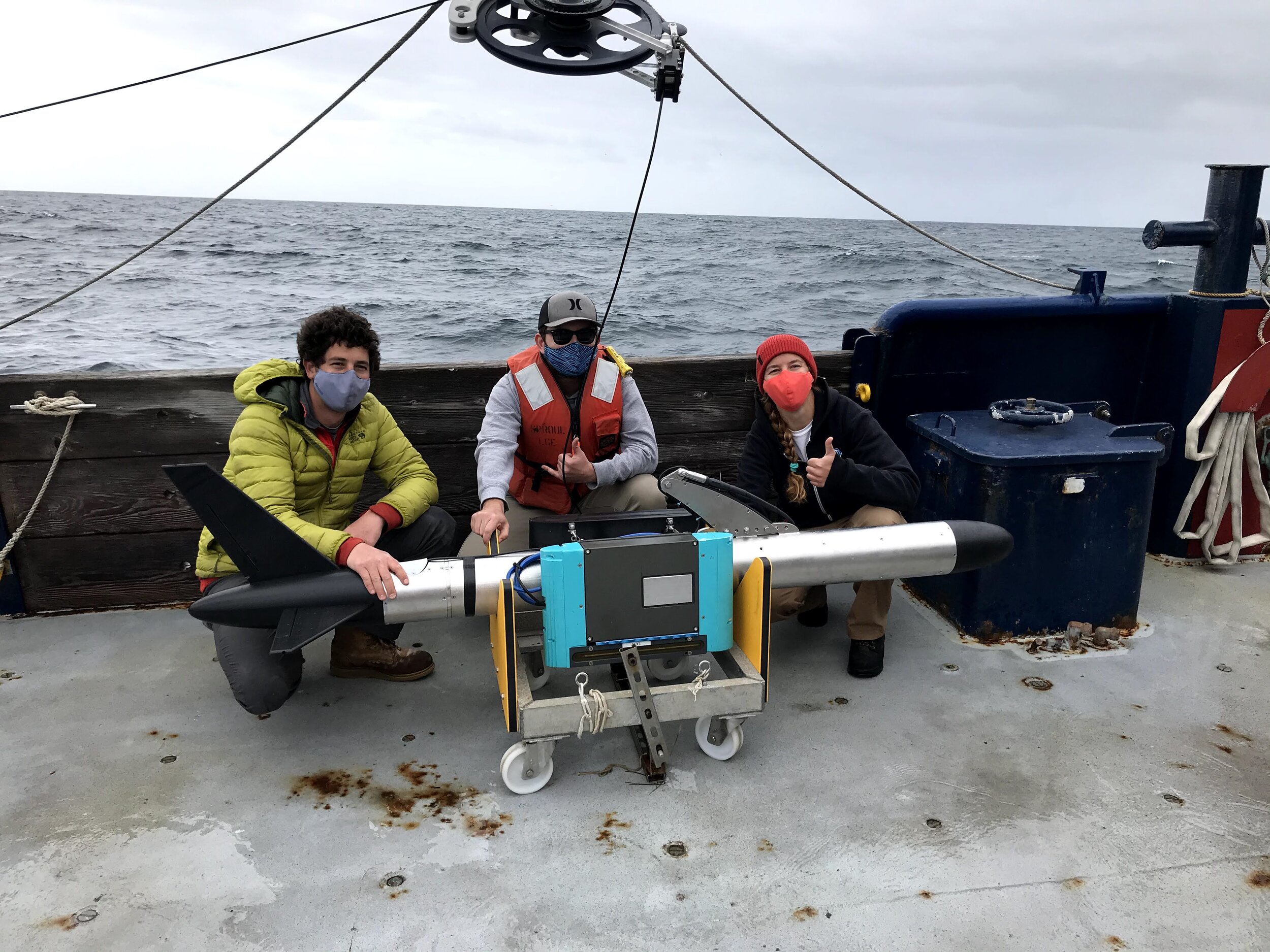Engineers Jonathan Ladner, Riley Baird and Sara Goheen are excited about the new instrument!
Though this year has been hard and different in so very many ways, one small up-side from the reduced fieldwork has been the opportunity to make progress with some new development projects. Building off of previous pioneering advances of Rob Pinkel, Jerry Smith and Mike Goldin, the group has been hard at work designing and building a new phased array. Normally, ‘Doppler Sonars’ in the ocean are mounted on a ship or moored, and measure a profile of ocean currents in one direction, by sending out acoustic signals, looking for the doppler shift of the reflected response from moving currents (think sound of passing trains), and range-gating the results to get a measure of ocean currents as a function, say , of depth below a ship. As a ship drives around, that allows us to map out ocean currents in two dimensions (depth below ship, and along the ship track). With a phased array, beams can be formed in multiple directions, allowing us to see a ‘wedge’ of ocean currents, not just a single profile. The hope of this new instrument is that if we tow a phased array behind a ship, it can map out volumes of near-synoptic ocean currents, which will let us better understand the complex and rapidly evolving structures of turbulence, submesoscale instabilities, frontal dynamics, and more! Last week the team headed out on the R/V Sproul and did some debut towing and testing of our new vehicle.

